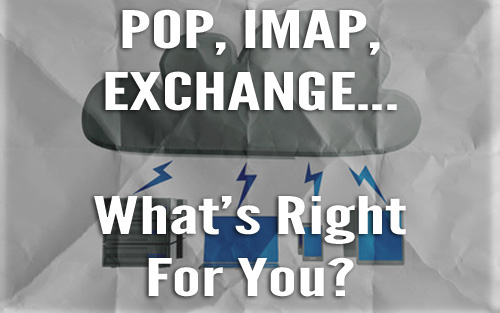A critical subtle element that you have to think about while setting up your record or including email records is if your email is POP3, IMAP or Exchange.
We send a considerable measure of email nowadays at work, at home, on our telephones… But do you know what all the email language implies? Continue perusing to discover all the more about the contrast between the different approaches to get email.
Whether you utilize Gmail, Hotmail, Yahoo mail, or email designed naturally site there’s a whole other world to getting email than it may appear like at first glance. Today, we’ll be concentrating on some noting the absolute most regular hindrances regarding setting up new email records and clarifying the distinction.
There are three noteworthy email conventions: POP3, IMAP and Exchange. POP3 remains the most fundamental where IMAP and Exchange offer more noteworthy points of interest, individually.
POP3 – Post Office Protocol
With POP3 accounts, when you read your messages, it makes a neighbourhood duplicate in your PC and erases the first message from the server. The messages are attached to a particular PC/machine and can’t be gotten to any-place else.
Since this is the way POP3 records carry on, contractually is not able to get to your messages from your server. We won’t have the capacity to record your timestamps and contact’s email address and even track email discussions. The main way you can utilize these sorts of email records with contractually is whether you utilize it with Microsoft Outlook. You will need to download our Outlook plug-in which will make contacts and track messages making headway.
IMAP, Internet Message Access Protocol
Contrasted with POP3, IMAP permits clients to sign into a wide range of email customers or web-mail interfaces and perspective the same messages, on the grounds that the messages are continued remote email servers until the client erases them. In our current reality where we now check our email on web interfaces, email customers, and on cellular telephones, IMAP has turn out to be amazingly prominent. It isn’t without its issues, however.
Since IMAP stores messages on a remote mail server, you’ll have a constrained letter drop size contingent upon the settings gave by the email administration. In the event that you have enormous quantities of messages you need to keep, you could keep running into issues sending and getting mail when your case is full. A few clients evade this issue by making neighbourhood filed duplicates of messages utilizing their email customer, and after that erasing them from the remote server.
Microsoft Exchange
This sort of email record carries on much like IMAP yet the server is a Microsoft Exchange server. This is generally utilized by enormous organizations.
Microsoft started creating MAPI (some of the time called Messaging API) not long after IMAP and POP were initially created, in spite of the fact that it has utilizes past straightforward email. Altogether contrasting IMAP and POP with MAPI is really specialized, and out of degree for some perusers of this article. Basically, MAPI is a path for applications and email customers to correspond with Microsoft Exchange servers, and is fit for IMAP style matching up of messages, contacts, logbooks, and different components, all tied into neighbourhood email customers or applications. This capacity of matching up messages is marked by Microsoft as “Trade Active Sync.” Depending on what gadget, telephone, or customer you utilize, this same innovation may be called any of the three Microsoft items (Microsoft Exchange, MAPI, or Exchange Active-sync), however will offer the same cloud-based email synchronizing as IMAP.
Exchange also permits you to match up email statuses, as well as your date-book, contacts and errands, giving you the adaptability to timetable gatherings and perspective shared date-books from any gadget.
Precisely assess the right email convention for your business and acquaint yourself with both the restrictions and capacities so you see how its either impeding or adding to your kin’s efficiency.


